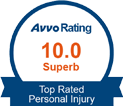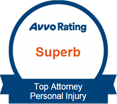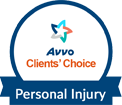Also known as T-bone accidents, side-impact collisions are dangerous types of accidents. A side-impact collision occurs when a vehicle hits the side of another vehicle. In T-bone accidents, there is little protection for passengers, and most of them suffer injuries from the significant impact of vehicle door and window. When this type of accident occurs, passengers often suffer debilitating injuries and even death.
When you or a loved one suffers injuries in a side-impact collision, you need to undertake two essential tasks. First, you should seek prompt medical care because it may help save a life. You should also seek the help of an experienced personal injury to seek compensation from the negligent party. The Personal Injury Attorney Law Firm assists persons who may have suffered injuries due to the negligence of another person to seek compensation.
Establishing Fault in a Side-Impact Collision
Vehicle crash fatalities in California mainly result from side-impact collisions. When another vehicle hits your car on the side, there is only the door and the window between the fore involved and your vehicle occupants. It can be challenging to determine which driver is responsible for causing a T-bone collision. In most cases, both the drivers involved may be partially at fault. A driver may be negligent and liable for an accident if he/she fails to stop at an intersection. A driver may also be at fault for failing to yield the right-of-way to other road users. The person occupying the vehicle that was may also be at fault. The driver may be at fault for engaging in distracted driving, including texting while driving and failing to stop at an intersection.
The law bases negligence on the violation of traffic rules and failing to drive with due care. Upon establishing fault, the negligent driver is liable to other drivers and passengers. The driver should compensate the victims for any damages suffered because of the accident.
Leading Causes of Side-Impact Collisions
Side impact collisions in California occur due to a wide range of factors. However, the majority of the accidents occur due to a driver failing to operate with due care on the road. Some of the specific causes of side-impact collisions in California include:
Running the Red Light
Running the red light means passing through the traffic light when the red light is illuminated. The law requires all drivers to stop behind the white line when the red light is on. A motorist should only drive when the green light comes on, and only when it is safe to proceed. Running the red light is one of the leading causes of side-impact collisions in California.
Speeding
Speeding over the prescribed limit while approaching road intersections is a common cause of T-bone accidents in California. While approaching an intersection, a driver may not have ample time to think and brake the vehicle. Therefore, the driver may not be able to stop if he/she was speeding through a traffic signal or a stop sign. Injuries that occur during a side-impact accident are often severe if the drivers run the red light while speeding.
Driving Under the Influence
Operating a vehicle while intoxicated is also a leading cause of side-impact collisions. Consumption of alcohol impairs your vision and your reaction time. While impaired, you may not be able to make a quick judgment. It is common for intoxicated people to engage in careless driving, including speeding, swift lane changes, running a red light, and misjudging safe turns at spotlights. Drunk drivers also tend to make the wrong turns and travel in the wrong way. Therefore, operating a vehicle while intoxicated makes drivers misjudge safe turns at spotlights.
Failure to Yield
California law requires drivers to yield right of way to other drivers in some instances. If one driver fails to yield the right-of-way to other drivers, T-bone collisions often result. At an intersection, a driver should yield to oncoming traffic when making either a left or a light turn. A driver should also yield the right-of-way by stopping at a stop sign. Failure to follow the rules when proceeding at a four-way stop may lead to side-impact collisions.
Distracted Driving
A leading cause of the side-impact collision is engaging in distracted driving. A driver may engage in distracted driving by driving while texting on the cell phone or eating while driving. Engaging in any activity that may take a driver's attention from the road may lead to an accident. While distracted, a driver is not likely to realize that he/she is expected to cause a side-impact collision.
A Victim's Proof
If you suffer injuries in a side-impact collision in California, you have to prove various elements to seek compensation. The elements of negligence that the victim has to prove include that the driver owed the victim a duty of care. The victim must also prove that the negligent driver breached his/her duty of care. The victim also has to show that the negligence of the other driver was a substantial/significant factor in causing the victim's injuries.
After suffering injuries, it is not difficult to prove that the other driver owed you a duty of care. California law requires all drivers to exercise a duty of care to other road users. A driver has to use reasonable care when operating a vehicle. The driver also has to look out for pedestrians, other vehicles, or obstacles. It is also the legal duty of the driver to control the movement or the speed of his/her vehicle.
Common Injuries in Side-impact Collisions
After involvement in a side-impact collision, the injuries you suffer may vary depending on many factors. For instance, the injuries you suffer will depend on several factors. Some of the factors that will determine the injuries you suffer include the speed of the collision. The angle of the impact, presence of airbags, vehicle type, and seatbelt use will also determine the impact.
The presence of safety features in a vehicle may significantly reduce the injuries you suffer in a side-impact collision. For instance, if your car has side-curtain airbags, you may not suffer severe injuries. The injuries may be less severe if your vehicle has high side-impact ratings. Irrespective of whether safety features are available or not, side-impact collisions may lead to severe implications.
Some of the common forms of injuries in a side-impact collision include brain trauma and head injuries. Victims are also likely to suffer back and neck injuries. Other common injuries include facial trauma, internal injuries, and broken bones. Sometimes, the victims may not be able to move out of the vehicle wreckage after a collision.
Trapping of victims in the vehicle wreckage may make the injuries worse. While trapped in the vehicle, the victims may not be able to seek prompt medical attention. It would take the help of emergency responders to take the victims out of the wreckage. The period for which victims remain in the vehicle after an accident will determine the well-being of the victim.
Steps to Take After an Involvement in a Side-Impact Collision
The steps you take after a side-impact collision will go a long way in determining your likelihood of getting compensation. The actions you take will also prevent you from violating the California law and prevent suspension of your driver's license. If you do not suffer severe injuries, it is advisable to remain at the scene of the accident until the police arrive. If you leave the scene of the accident, the other driver may attempt to implicate you and prove that you are to blame for the accident.
However, you should not stay at the scene of the accident if you have suffered severe injuries that require immediate medical attention. Do not wait for the police if you have suffered significant injuries. Instead of staying at the accident scene, you may call 911 or request another person to call the police for you. If another person offers to take you to the hospital, ensure that you leave your contact information with the other drivers.
If you are in a position to, it is advisable to capture as much information as you can about the other vehicle. You may take photos of the accident scene or write down the other vehicle's registration details. Ensure that you capture the license plate of any vehicle involved in the accident. Ensure that you also get other details like the color, the make, or the year of manufacture of the other car. You will require this information when reporting the accident to the California Department of Motor Vehicles. You will also require the information when filing a personal injury lawsuit.
To help strengthen your injury claim, you may also take photos of your vehicle damages and your injuries. If you have suffered bruises, ensure that you capture the bruises on camera. Even if your injuries appear minor, do not admit that you are not hurt. Even if you think that your injuries are minor, do not inform the other driver. Admitting that you are not hurt may allow the other driver to avoid compensating you. If you are not sure whether you are hurt, you may tell the other driver that you need to undergo a mental check-up. Immediately after an accident, the body is often numb due to the sudden impact and rush of adrenaline. You may not realize that you are hurt until the numbness wears off. Therefore, you should not admit that you are not hurt.
At times, you may partly to blame for the side-impact. However, you should not admit fault. Do not admit to any wrongdoing even if you think the accident is your fault. The other driver may also be partly to blame for the accident. California is a comparative fault state, which believes in apportioning fault among negligent parties. Avoid apologizing to the other driver because this may imply that you are admitting fault. If the other driver coerces you to accept responsibility for the accident, politely request him/her to call your insurance company.
When you are in a car crash, the first thing insurance companies ask is which driver is to blame for the accident. Most side-impact collisions occur when another driver hits your vehicle. For instance, another driver may hit you from the side when you are traveling through an intersection. You may also get into a side impact collision when another driver cuts in front of you. However, even when it is evident that the other driver is at fault, the driver may claim that he/she had the right-of-way.
After arriving at the scene of the accident, the police officers will note in their report any factors that may prove who is to blame for the accident. The police officers may even interview some witnesses. For instance, the police may question witnesses. Witnesses may clarify whether traffic lights were red or green. The witnesses may also point out whether a driver failed to stop at a stop sign. In a situation where witnesses are not available, the police may look out for other evidence to establish what happened. For instance, the police may look out for skid marks, and the points of damage on the vehicles. This information can help the police to determine what happened.
When is the Plaintiff at Fault?
A plaintiff can still recover damages in a California side-impact collision even if he/she is at fault. The plaintiff will receive compensation less of his/her degree of fault. For instance, if the plaintiff is 20% to blame for the accident, he/she will receive a compensation of 80%. At times, the victim may be to blame for the damages suffered even if he/she did not cause the accident. For instance, the other driver may claim that the victim was not wearing a seatbelt at the time of the accident, and this escalated the injuries suffered by the victim.
The plaintiff might be to blame for the injuries if the plaintiff's vehicle had a working seatbelt. It must be evident that under similar circumstances, a reasonable person would have used the seat belt. It must also be evident that the plaintiff failed to wear a seat belt and that the injuries the plaintiff suffered would have been less if he/she was wearing a seat belt.
It is often hard to establish fault in a side-impact collision because the victim and the defendant often tell different stories. If you suffer injuries in a side-impact collision, it may be difficult to negotiate with the defendant. It is therefore important to talk to an attorney. An attorney will help you know what to expect from your case.
The Other Driver is Uninsured
If you get into a side-impact crash and the other driver is uninsured, how will you get compensation? California law requires all drivers in California to carry minimum insurance. In California, drivers also require insurance companies to provide uninsured or underinsured motorist coverage. However, uninsured or underinsured coverage is not compulsory.
If the other driver is at fault, but he/she does not have insurance cover, the uninsured coverage will compensate you for the damages. The underinsured coverage will pay for damages when the other driver's insurance policy does not offer enough coverage to meet all the total damages. If the other driver has no insurance or if the driver is underinsured, you may seek compensation by filing a claim against the driver. However, many drivers without auto insurance in California also tend to have financial constraints. Therefore, the drivers are often unable to cover the costs of damages suffered by the plaintiff.
Seeking Compensation
After suffering injuries in a side-impact collision, you may seek both economic and non-economic damages:
Economic Damages
These refer to damages that are easy to quantify in monetary form. Medical costs incurred in seeking treatment for your injuries are a form of economic damages. Injuries resulting from T-bone collisions are often severe and call for intense medical treatment. When considering medical expenses, do not focus on the past and present medical expenses only. You should also focus on the medical expenses you are likely to incur in the future. For instance, if you suffer broken bones, you are likely to require many months of physical therapy. Ensure that you consider all costs, including physiotherapy and medication costs.
Economic damages also comprise of compensation for lost wages. After suffering injuries in a side-impact collision, you are likely to spend some time away from work. You will need some time off to help you recover from the injuries. You are not going to earn the income you used to earn before the accident. In offering compensation for lost wages, the court considers your regular hourly pay and the number of hours you spend away from work. For instance, if you work for 8 hours a day, earning a wage of $30 per hour, the court considers the total hours out of work. If you stay away from work for ten days, your compensation will be 10days x 8 hours x $30 = $2,400. The court may consider other factors like commissions and bonuses. The court may also consider your leave days and offer you compensation for them as well.
Under economic damages, you should also seek compensation for lost earning capacity. Given the severe nature of side-impact collisions, you are likely to suffer permanent injuries and permanent disability. You may not be able to ever work again. Even if you happen to go back to work, you may not be as effective as you were before the accident. It is, therefore, essential to seek compensation for lost earning capacity. If you go back to work, the lost earning capacity due will be the amount you used to earn before the accident less the amount you can earn after the accident.
Non-Economic Damages
Non-economic damages refer to damages that are hard to quantify in monetary form. It comprises injuries like emotional distress and pain and suffering. After the side-impact collision, you are likely to experience feelings of hopelessness, self-pity, and anxiety. You may also experience immense pain and suffering due to the injuries you suffered during the accident.
You should also seek compensation for loss of enjoyment in life. You may no longer enjoy life like before, especially if you suffer disfigurement, loss of limbs, or permanent disability. You may no longer take part in hobbies, like sports. You may shy away from social gatherings to hide your bruises from people. You are therefore entitled to compensation for loss of enjoyment in life.
Your spouse may seek compensation for the loss of consortium. This compensates your spouse for the loss of companionship and intimacy that he/she shared with you before the accident.
Wrongful Death Compensation
Side impact collisions are often fatal, and many victims succumb to injuries. If your spouse or child dies in a collision and he/she is not available to seek compensation, you may file a wrongful death claim. A relative of the deceased may file a claim under California's survivor cause of action or California's wrongful death laws. This may be the only way to hold the liable party responsible.
Some of the damage that is available after filing a wrongful death claim includes burial expenses and funeral expenses. The surviving family of the victim may also get compensation for lost wages the victim would have earned if he/she were still alive. The relatives are also entitled to compensation for loss of companionship and support.
Some of the persons who qualify to file a wrongful death claim include the spouse of the deceased or a registered domestic partner of the deceased. The children of the victim may also file a wrongful death claim. If the children of the deceased are not present, the grandchildren of the deceased may file a wrongful death claim. Any other person entitled to the estate of the deceased, according to the California intestate succession laws, may also file a wrongful death claim.
Contact a Personal Injury Attorney Near Me
After suffering injuries in a side-impact collision, it is essential to contact an attorney immediately. An attorney will evaluate your case and advise you on the best action to take. The Personal Injury Attorney Law Firm assists victims of car accidents in California to seek compensation. Contact us at 619-625-8707 and speak to one of our experts.
Recommended: Los Angeles Personal Injury Attorney, Las Vegas Personal Injury Attorney
 800-492-6718
800-492-6718







